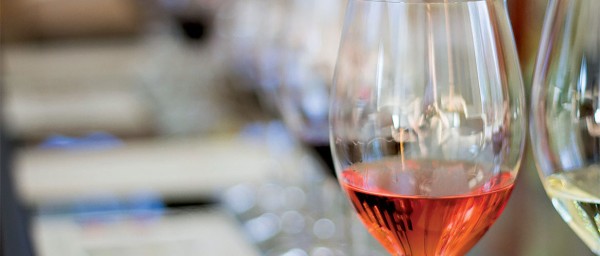Rosé to the Rescue!
Contributed by on Jun 29, 2016
Zero readers love this post.

Considering how toasty it is outside at present, there is a noticeable dearth of rosé wine being offered on restaurant menus and, frankly, it’s alarming. Maybe it was the hipster foodies who flooded Instagram with their runny-yolked brunch scenes dotted with glasses of the pink stuff. But if the world has already tired of #roséallday, may I suggest the world stop pouting, uncross its arms and remember that rosé saves the day!
With the price of New Zealand sauvignon blanc creeping ever upward (I see you, Kim Crawford!), rosé can be the ticket at any time of day—especially if that day is going to hit triple digits.
Often nestled (for understandable reasons) between the whites and reds on wine menus, it’s typical to see a single rosé offered, maybe two. And while there is little to be learned about them from their names or provenance, the price, says Blackbird Vineyards founder and owner Michael Polenske, should be as palatable as the wine is quaffable—no more than $50-$60 per bottle in a restaurant, $30 retail.

Polenske’s Blackbird—a Right Bank-style, merlot-focused label (“merlot” is French slang for “little black bird”)—has been making Arriviste Napa Valley Rosé from merlot, cabernet franc and cabernet sauvignon since 2008, a move that was inspired by the light pink wine and water mixture given to grape pickers in the south of France after a day’s work during the harvest.
What started with 232 cases has grown exponentially each year to reach the 2015 harvest’s 2,100 cases, “and we probably have demand for more than 5,000 this year,” Polenske adds. And the 2015 vintage is what you should be drinking this summer. These wines are dry and snappy, with varying fruit profiles, and they adore a little chill on the bottle. Of course, “dry but fruity” can be tough to wrap one’s head around, but therein lies the magic. If rosé suffers from anything, it’s being chronically misunderstood, or what Polenske calls “legacy issues.” The bottom line: Rosé is not white zinfandel.
“People confuse fruit and lightness with sugar and sweet. A good rosé should be bone-dry, no sugar in it. Then, depending on what varietal you’re making it from, [flavor profiles] can be any of the different fruit families. There might be cherries, dark fruits, berries ... ” Color, too, varies from blush and deep pink to coral and peach. Polenske’s Arriviste Rosé (a play on those with “new money”) takes its color from the saignée method, wherein the free-run juice “bleeding” from freshly harvested grapes is colored from skin contact.
“The critical part is that they’re dry,” Polenske says. Rosé’s lip-smacking nature revs your palate up, quenching thirst alone or with food as the life of your pool party, picnic or barbecue. Polenske, however, reaches for rosé year-round. “I’ll serve a rosé to kick off Thanksgiving and Christmas dinner, just because I like it. It’s got a good body to it, and I love the color on the table. It adds to the conversation. People are like, ‘Wait—it’s not summer. Why are we drinking rosé?’”
A better question would be, why aren’t we?
Blackbird Vineyards “Arriviste” Rosé 2015, Napa Valley, CA, $25, BlackbirdVineyards.com.
Find it: $14 glass, $55 bottle, Mandarin Bar in Mandarin Oriental.
Nose: Strawberry and iris aromas with hints of tropical fruit.
Palate: Tart cherry, red apple and cool citrus carrying clean minerality and bright acidity to the lingering finish.
The post Rosé to the Rescue appeared first on Vegas Seven.
